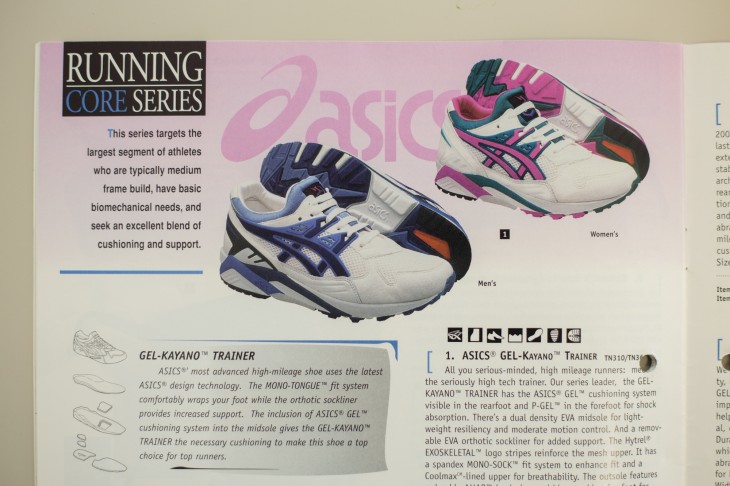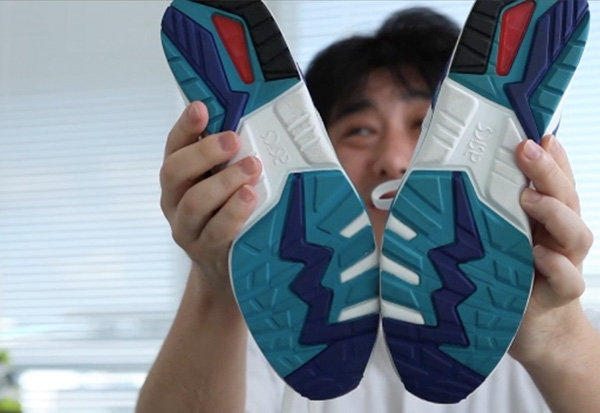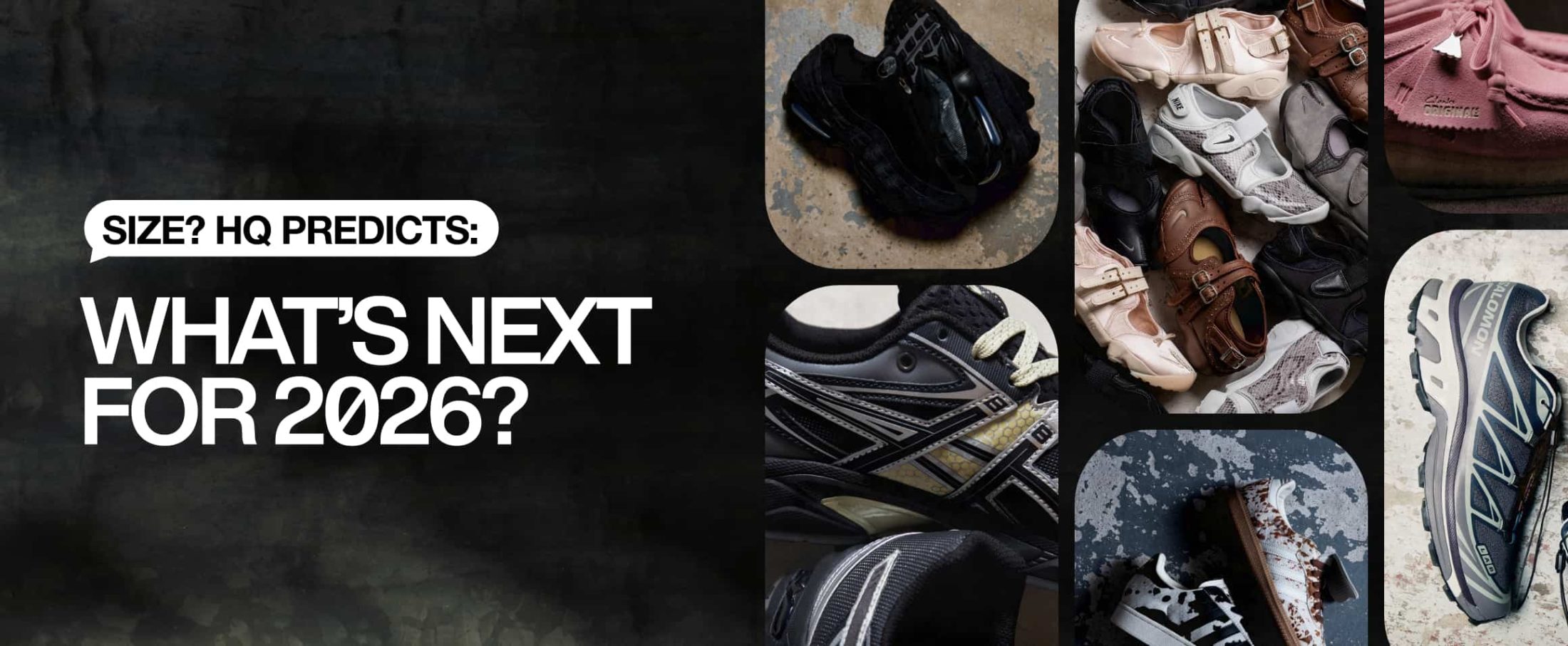Onitsuka Tiger and ASICS: The History 1985 – 1994 by Gary Warnett

The third and final part of this feature takes a look at some of the key silhouettes that were released by Kihachiro Onitsuka’s footwear brand between 1985 and 1994.
1985 — COLORADO
For those who wanted to train in every kind of condition , the ASICS Tiger Colorado was an off road vehicle for the feet. With its raised forefoot bumper for extra traction and resilient materials, this silhouette was created for cross country, but was also made with cross training in mind too. While several of the jogging shoes of the era were named after sunny, West Coast states, the Colorado was named after the home of the Southern Rocky Mountains.
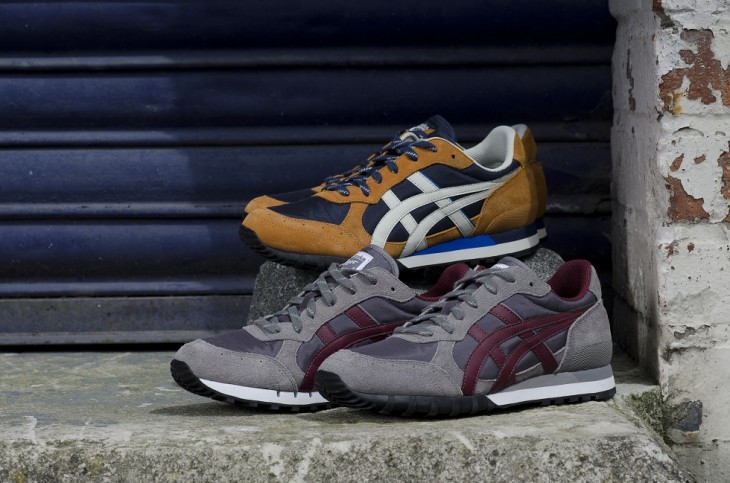
1985 — EPIRUS
The Epirus is a runner and connoisseur’s favourite that ushered in a new era for ASICS Tiger. At this point in time, the serious running shoe was a coveted object with substantial price points to match. This silhouette would attract a trend-level audience on its own terms — pure performance authenticity had become a statement. The use of colour helped separate this one from the others on store shelves. But, with its dual-density midsole, emphasis on motion control, anti-overpronation shelf and bi-level tread, the Epirus was still a very serious creation. Because of its popularity, this design would even make a comeback almost a decade later as the Epirus Classic in 1994.

1985 – ALLIANCE
The ASICS Tiger Alliance is a perfect example of the brand’s form follows function beauty — this high-performance masterpiece balanced a racer’s lightweight with a training shoe’s resilience. The wavy appearance on the sole unit came from the two layer rippled technology that deflected shock waves at an angle when they hit the side of the ripple and compressed to create an upward counterforce. The upper worked perfectly with the unique looks of the Alliance’s sole — with the brand being pioneers of moulded EVA in the mid 1980s — and twinned with the Air Flex Canals, this would be a key statement of intent before the dawn of GEL technology. At the close of the decade, the Alliance would get a Gel upgrade and it was a testament to this shoe’s appeal that both versions were reissued in the mid 1980s.

1986 – FREAKS
This is where the GEL era began. This curious-looking jogging design was the start of a dynasty — pitched somewhere between traditional performance shoe drabness and flamboyance with its silver material and reflective hits, the Freaks incorporated Alpha GEL technology for definitive shock absorption. The most curious element of this model remains the extended heel for extra traction and support. With this model pushed more heavily in Japan, ASICS Tiger’s GEL would come of age in subsequent months and get the marketing drive it deserved globally.
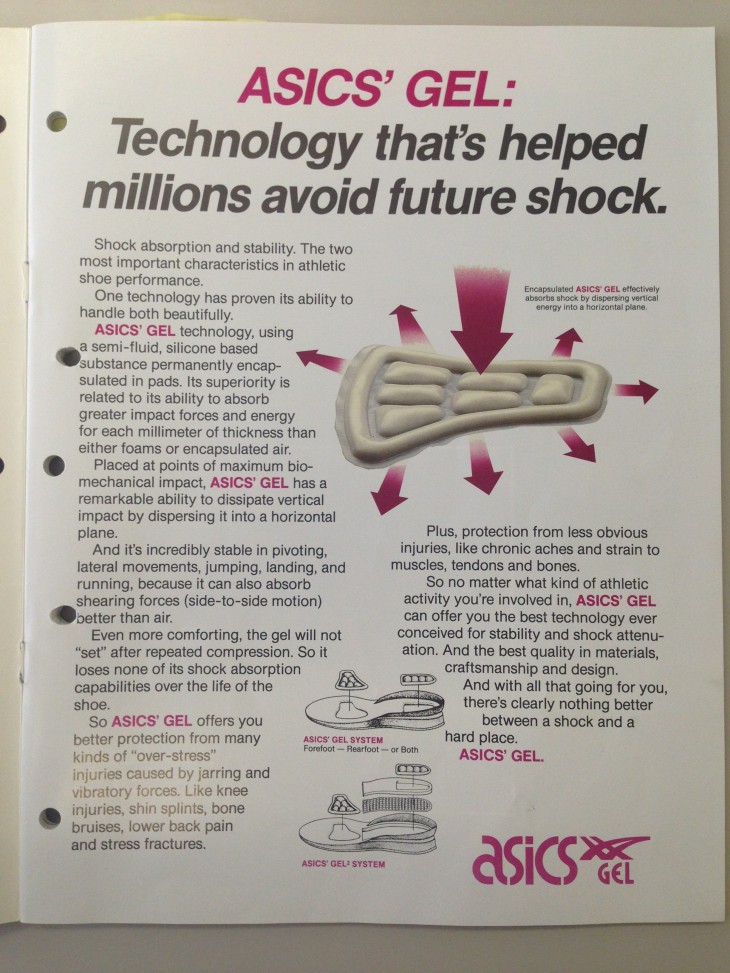
1986 — GT II
A Tiger shoe with an ASICS technology, the Gran Turismo II design operated like the sequel to the much-loved Alliance and expanded on the standard set by the bestselling X-Caliber GT years previous. Shock absorption was the emphasis here — the silicone based Alpha GEL system in the rearfoot and forefoot absorbed energy and proved to be 28% more effective than rival cushioning innovations of the era. This application maintained its benefits during long distances, placed above the midsole and complemented by other long-lasting applications like the tri-density outsole, an extended heel counter, a reinforced upper with stabilising straps and an integrated heel pillar. For many, it was a perfect ride and typically, it was accompanied by a trash-talking ad campaign directed at the opposition.
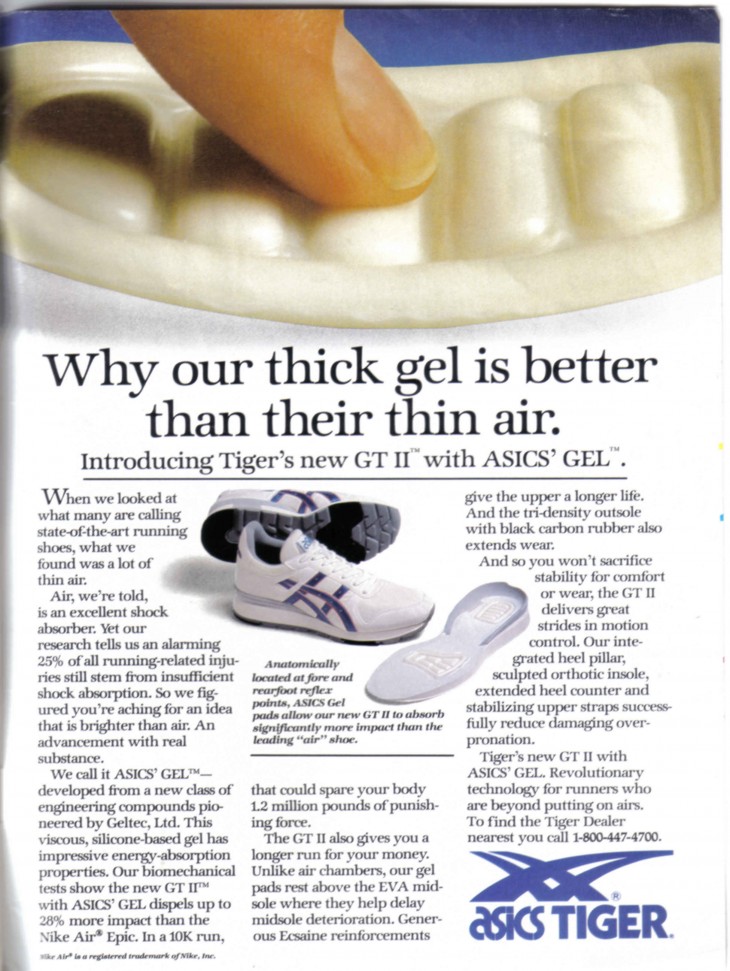
1987 – Full name switch to ASICS
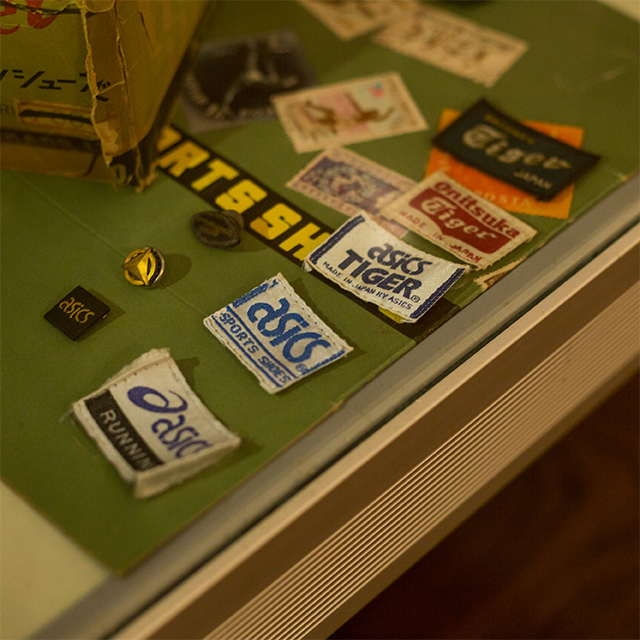
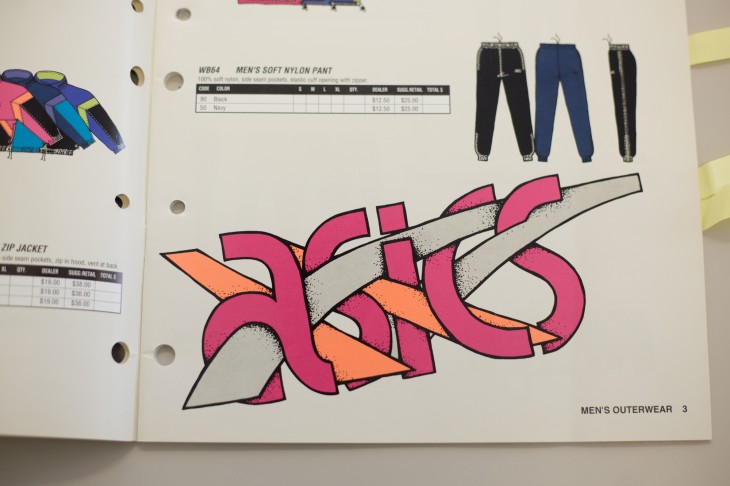
1987 – GEL-LYTE
As start of a series that would create its own standard, the original GEL-Lyte set the visual standard for the series with its scope for colour blocking and reflective forefoot panels for extra visibility. The ultra light feel of the shoe was assisted by the solitary heel GEL unit, Nyla-sheen synthetic fabric and DURASKIN reinforcement. An anti-torque stability system was applied with motion control in mind, while the blown rubber outsole (which would wear away a little too quickly for some runners) with a gum rubber heel plug completed this mid to high mileage creation. At just 9.9 ounces and introducing a tri-density midsole, the GEL-Lyte was an efficient creation that liberated the athlete.
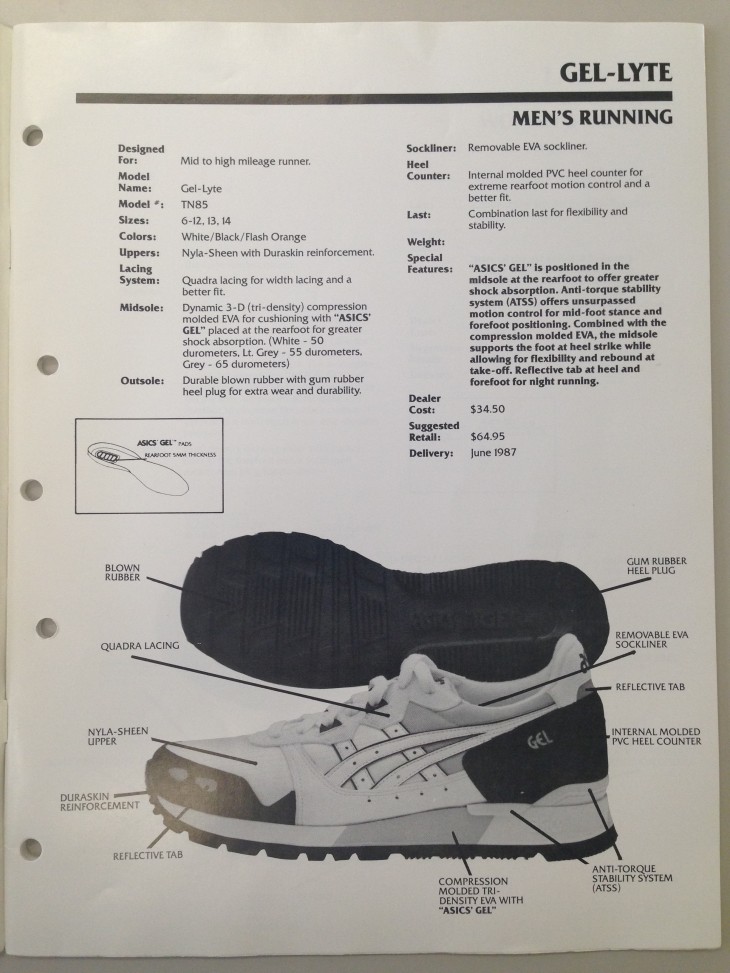
1988 – GT III
The third Gran Turismo design built on its GEL debuting predecessor to create the ultimate high performance training shoe. If the Alpha GEL of the original was effective with its rear and forefoot applications, this one went further with a brand-new full-length GEL2 system for better shock absorption alongside rear and forefoot pads for an incredible ride. The Duramesh forefoot and Ecsaine reinforcement, dual-density blown-rubber sole, plus a vertically extended midsole collar for superior motion control makes this a flagship that’s often overlooked when it comes to discussing the ASICS archive.
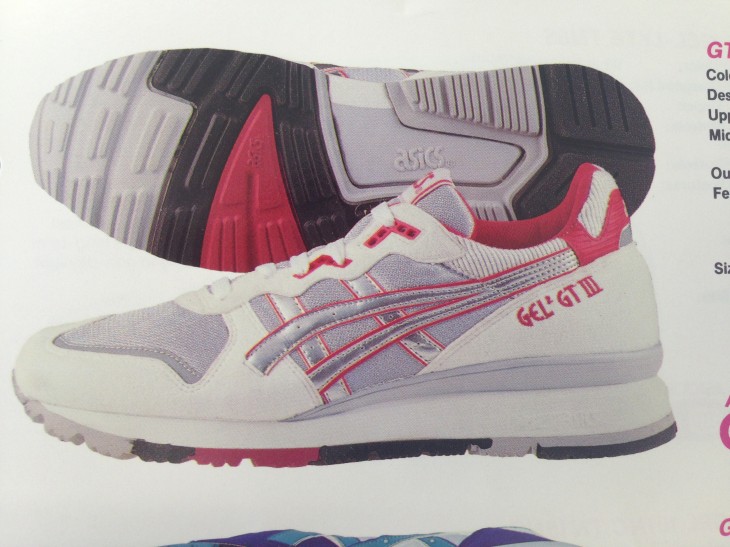
1989 – GEL-EPIRUS
As with the myriad upgrades of the Marup decades before, the debut of a new technology meant that even a runner’s favourite like the Epirus was open to an upgrade. 1989’s GEL-Epirus applied separate GEL units to the shoe’s rear and forefoot and retained the fan favourite features of the original — a bestseller that dropped just a year before this silicone cushioning made it to market. The cutaway at the toe that reduced weight and assisted breathability gave the Epirus’s sequel extra appeal. Rarely seen since its heyday, on its debut, this high-mileage model was a flagship that dropped in male and female specific versions.

1989 – GEL LD-RACER
The ASICS GEL LD-Racer is a lightweight, long-distance racer that wasn’t just eye catching — the shoe’s unique lateral and medial colour blocking makes them appealing from a visual standpoint — it was pioneering in introducing the split tongue fit the year before the GEL Lyte III debuted. An evolution of the flex canals in the forefoot and an all-mesh toe for minimal grams and breathable performance complimented a redefinition of comfort.
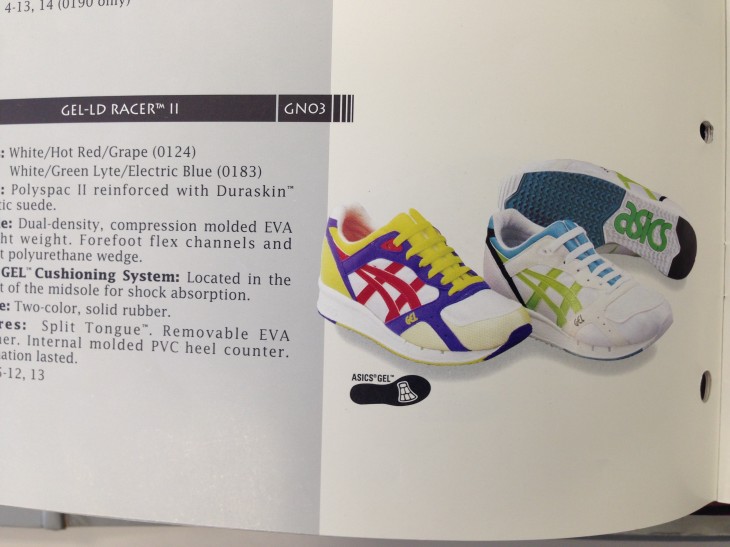
1989 – GEL-LYTE II
You’d be forgiven for mistaking the GEL-Lyte II for its predecessor — the panels and the reflective forefoot cutaways were incredibly similar to the original GEL-Lyte and beneath the bonnet, even the technologies were similar. Still committed to the mid and high-mileage runners, the emphasis on making lightweight performance better was still here — glossy Polyspac II fabric on the toe box and an internal moulded PVC heel counter provided variations on a road-tested theme. Less a sequel and more of an upgrade. Still, those dual colour hits at the collar proved that the little things can make a big difference visually too.

1990 – GEL-LYTE III
Light got lighter. The most recognisable entry in the GEL-Lyte series — aided by its well-timed reissue in the mid-2000s — is no stranger to wear at street level as a statement. Back when it debuted, progressive-minded New Yorkers were attracted by this relatively high-cost pinnacle performance piece for its interesting, but accessible appearance. Still, that was never part of the plan during its development. The split tongue fit is considered the key selling point, but from a performance standpoint, it was the tri-density compression moulded EVA midsole for extra impact protection that really broke ground on the GEL-Lyte III. That, plus the vertically extended medial and lateral midfoot frame for excellent motion control, made this the most comfortable ride to date from the GEL-Lyte series. The quirky details that complemented the function, like a reflective heel panel kept behind bars, have helped give this silhouette an appeal that just keeps escalating with each new colourway.
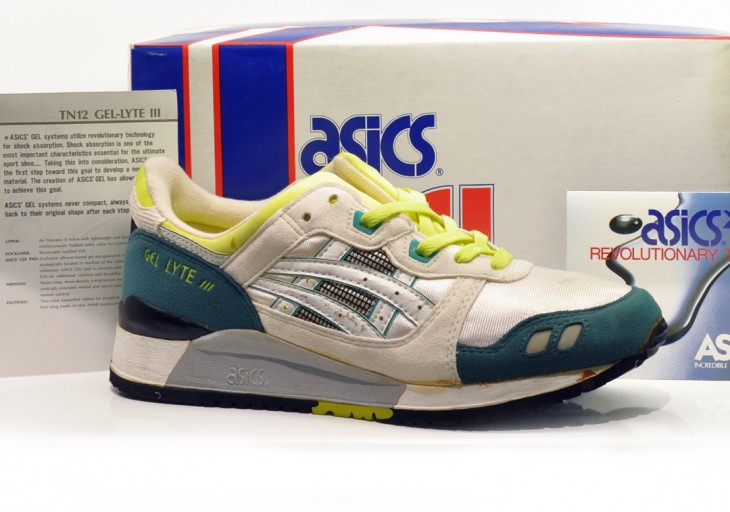
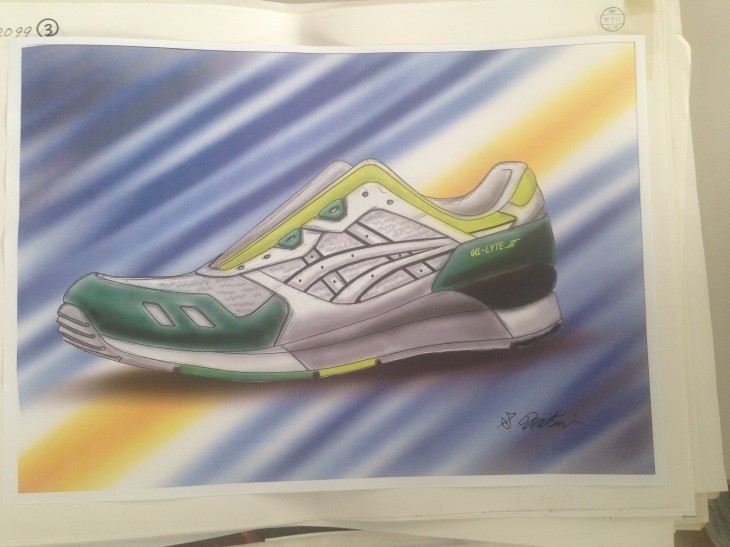

1991 – GT-LYTE X
Proof that the split tongue concept wasn’t confined to running, the GT-Lyte X was created to meet the demands of multi-activity fitness in a health club or gym setting. Made to conquer different disciplines, it utilised Durabuck as well as leather, dependant on the colourway, but beyond the curiosity factor of seeing the unorthodox slit fit on a mid-cut shoe, the outsole cutaway for visible rearfoot GEL on this dual cushioned creation made the previously invisible visible.
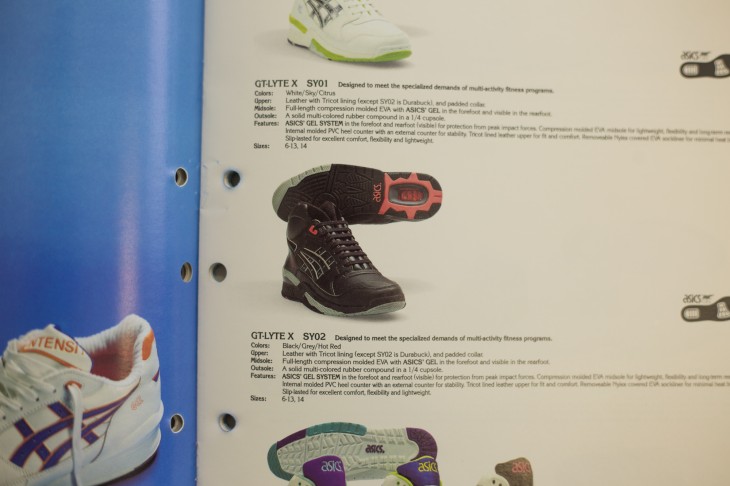
1991 – GEL-LYTESPEED
As of the final split-tongue designs, the GEL-Lytespeed was made for high mileage runners, with rear GEL cushioning, an ultra light mix of Polyspac II fabric and synthetic suede, internal heel counter and 3M heel tab for night running. The all mesh forefoot, extended collar and medial stabilising pillar ensured constant comfort and support for the full duration of a distance outing.
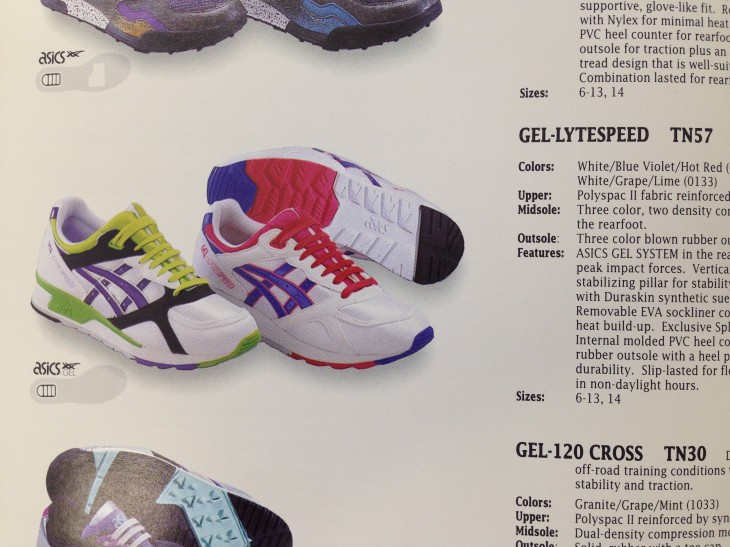
1991 – GEL-SAGA
The everyman of the ASICS GEL line amassed a significant following through its comfort, fair price and smart targeting of the mid-mileage runners. GEL in the rear, a compression moulded EVA midsole, Nylex collar padding and lightweight synthetics on the upper, plus some confident branding spawned subtle sequels too on a more technical looking sole. Despite its low key debut compared to some of its neon accented contemporaries, the GEL-Saga II has become a collaborator’s favourite and a particularly collectible silhouette.

1991 – GEL-TRAIL LYTE
This was proof that GEL technology could perform off road. This fast-paced, rugged creation used mesh and Lycra, with the mono-tongue technology that secured the foot and kept dirt out too. The compression moulded dual-density midsole, plus rear and forefoot GEL application cushioned on rocky terrain, while the durable synthetic leather upper and solid rubber outsole, with its toe wrapped reinforcement, was applied to last. Thanks to it its fade effects and speckles, the ASICS GEL-Trail Lyte hid mud splatters particularly effectively too.
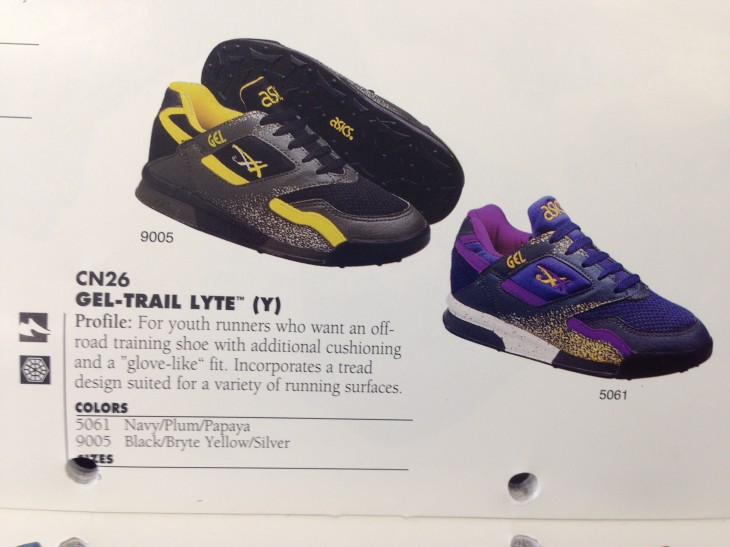
1991 – GEL-NIGHT LYTE
A true archive oddity, the ASICS Night-Lyte incorporated an LED in the heel that lit with every heel strike for visibility during night runs. Whereas prior Lyte shoes were named in relation to their lack of weight, this went in another direction. A dual-density compression moulded EVA sole included the P-GEL system for comfort and cushioning, while the breathable upper and resilient outsole went way beyond gimmickry.
1992 – GEL-LYTE ULTRA (AKA GEL-LYTE IV)
For collectors hunting the ASICS GEL-Lyte IV, there’s good and bad news. The bad news is that officially, there is no IV. The good news is that the fourth GEL-Lyte exists and it’s the GEL-Lyte Ultra. The reason for this switch from numbers? In Japan, the number four is considered unlucky, because it can be connected to death through its pronunciation. Alongside the number nine, which is connected to suffering, it’s often just omitted in a bid to avoid tempting fate. The split-tongue fit was gone here, replaced by a sock-like Mono-Tongue fit. A cutaway towards the toe nodded to the recurring detail of prior chapters and the addition of a Porous GEL wedge in the forefoot as well as rearfoot shock absorption created a more comfortable ride alongside a distinctly wavy dual density wave suspension midsole application that evoked the classic Alliance’s ripples. Even the outsole was engineered to flex with the foot like never before. That bounding panel across the upper complemented the ASICS stripes and supported the foot more, completing one of the most dramatic changes in the series to date.

1992 – GT-COOL XPRESS
The GT-Cool Xpress took the emphasis on shock absorption into the arena of bigger-is-better technologies with Porous forefoot GEL and rearfoot Super GEL. Visible through a cutaway on the midsole, Super GEL provided more cushioning in a newly maximised and positioned way. While this way of displaying the once unseen never seemed to pick up at the time, now visible GEL is commonplace in ASICS’ performance offerings, and was present in early editions of the Xcel line when it debuted the mysterious GEL Wave Suspension system.

1993 – GEL-LYTE V
The GEL-Lyte V was another subtle progression for the series. The sole unit, with its stability insert, GEL pad at the heel and P-GEL in the forefoot, was similar to the one used on the GEL-Lyte Ultra, while the sock-like mono-stretch fit was back again too. Sandwich mesh meant extra comfort during long distance runs. Even the reflective ‘V’ on the GEL-Lyte’s heel could be read as a reference to its number, with the traditional forefoot panels jettisoned in favour of a sleeker, more form-fitting toe design and exposed mesh beneath the unique forefoot paneling. More flexible, lighter and a product of its time, this was an intelligent piece of performance shoe design and proof that even this far into the GEL-Lyte dynasty, the appeal of the collection hadn’t diminished.
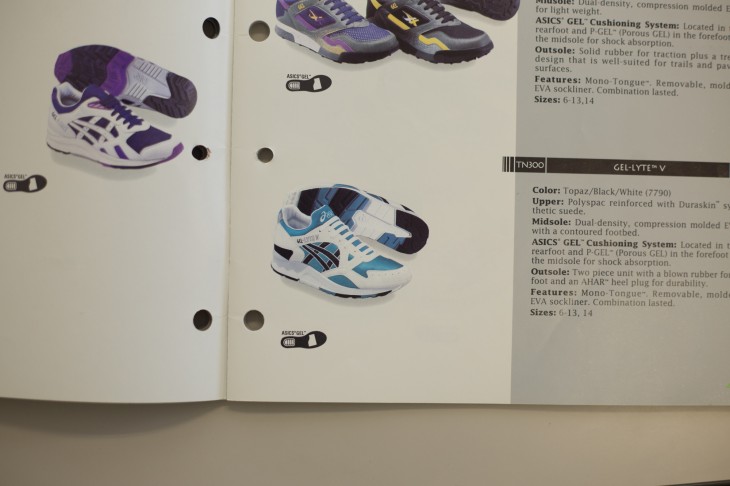
1993 – GEL-KAYANO
Toshikazu Kayano really set something off with these.Created for high-mileage runners looking for superb comfort, shock-absorption and an enhanced fit. Inspired by a beetle’s exoskeletal strength down to the horn-like sole details, the framework reinforced the upper and covered the Coolmax lined mesh. A contoured dual-density midsole and flex grooved outsole with a blown rubber forefoot got visible Theta GEL rearfoot cushioning and porous P-GEL in the forefoot. A combination lasted classic. And when it came to naming this masterpiece — the start of a series that’s still moving — Kayano-san was immortalised.
